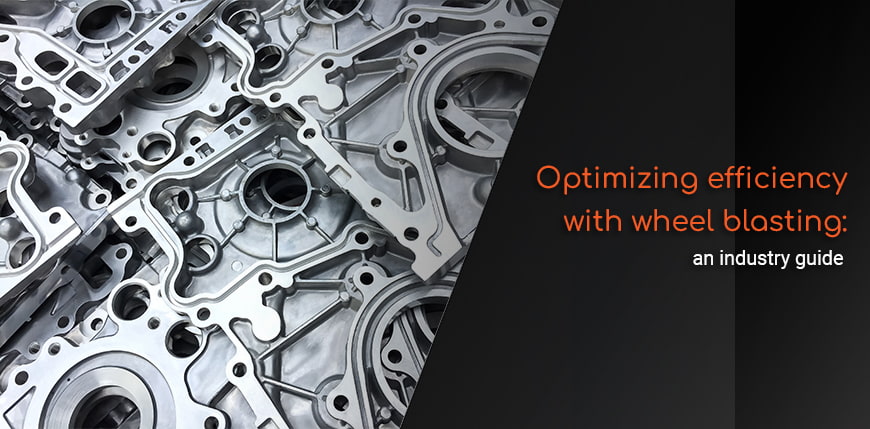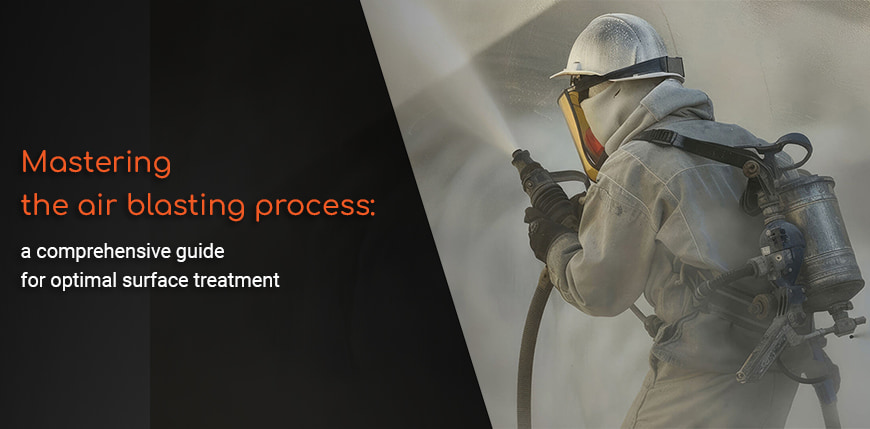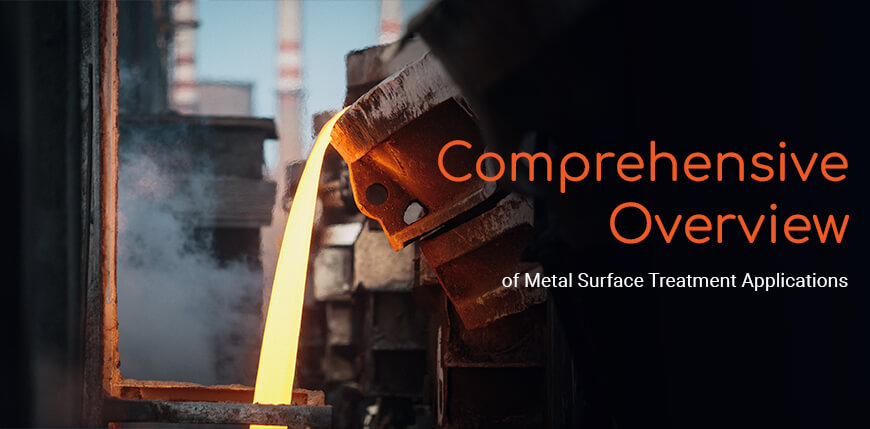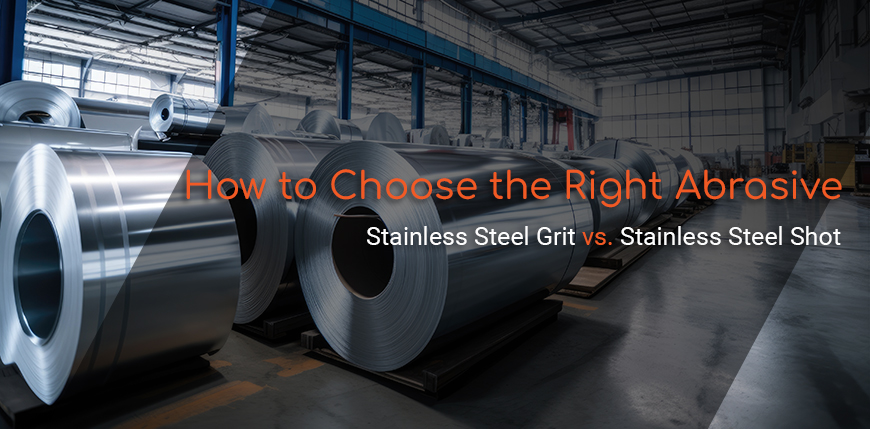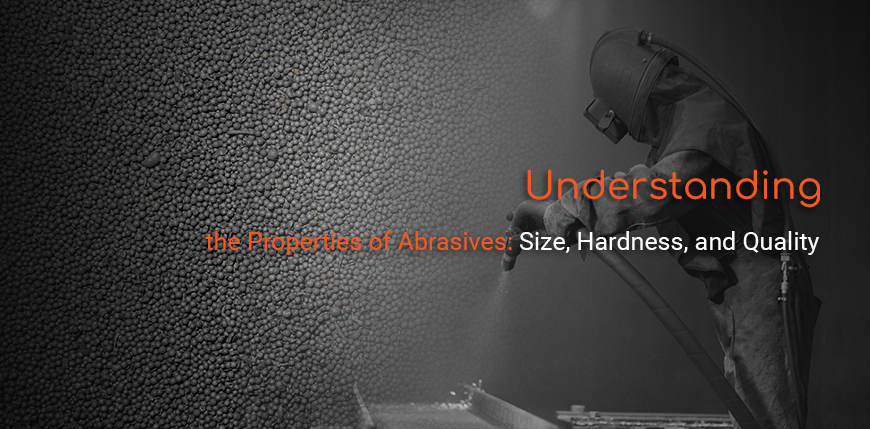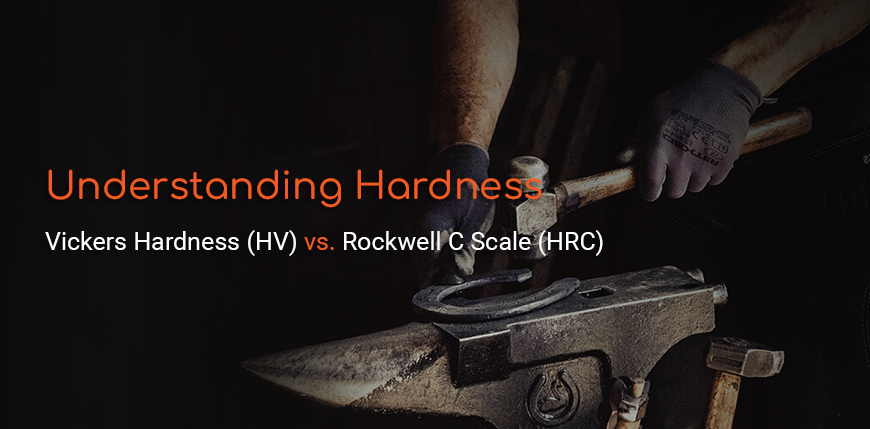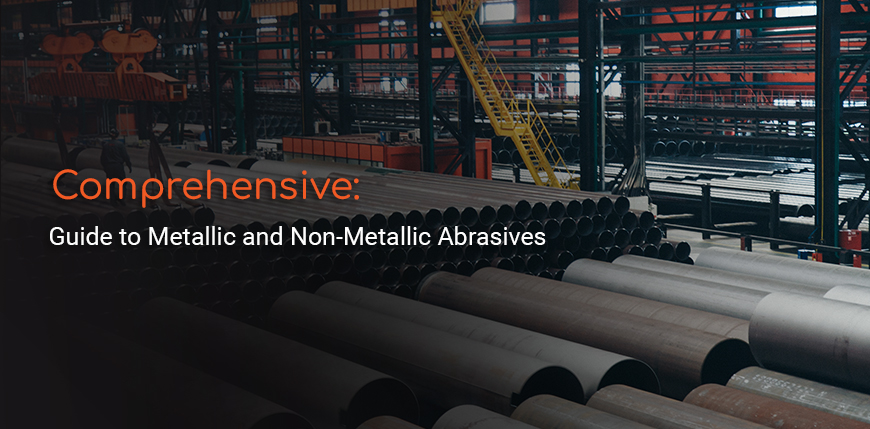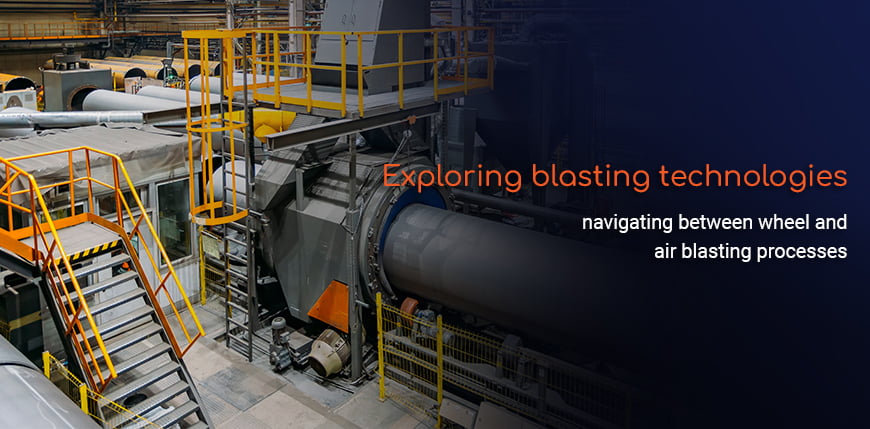
The field of industrial surface treatment offers a spectrum of technologies, each with its unique benefits and applications. This article serves as an introduction to wheel blasting and air blasting processes, providing a foundational understanding of each process, ensuring that industries can make informed decisions based on their specific requirements.
Blasting fundamentals: wheel vs. air blasting
Blasting technology accelerates abrasive materials against workpieces to achieve effects such as cleaning, descaling, deburring, and roughening. While both wheel and air blasting methods fulfill these purposes, they do so using distinct mechanisms and are suited for different types of work.
- Wheel blasting: Utilized predominantly in industrial settings for batch processing in production lines, wheel blasting is a significant portion of blasting activities. It employs various abrasives, such as steel shot and grit, cut wire, or even specialized media like Surfium and Prowheelium, tailored for specific applications. The automation, speed, and consistency of wheel blasting make it ideal for series parts manufacturing, offering efficient processing and a uniform finish across large volumes of parts.
- Air blasting: Although accounting for a smaller share, air blasting's versatility is unparalleled in treating large, complex, or intricately assembled parts. It leverages different abrasives, including softer media like glass beads or plastic media for sensitive surfaces, and more robust options like stainless steel, aluminum oxide or silicon carbide for tougher jobs. Air blasting's manual operation allows for detailed, precision-focused treatment, essential for unique or sensitive items, providing the flexibility to adapt to the substrate and the desired outcome.


Delving deeper: the wheel blasting process
Wheel blasting, an automated method, propels abrasives such as GL media or Prowheelium using centrifugal force from a rapidly spinning wheel. This process is highly efficient for treating numerous parts simultaneously, often within a conveyor system, making it a staple for high-volume production environments. The upcoming dedicated article will explore wheel blasting's intricacies, including machinery, abrasives selection, such as the choice between steel shot and grit or advanced media like Surfium, and the process's strategic advantages. Explore more for the full article.
Understanding air blasting dynamics
In contrast, air blasting employs compressed air to propel a variety of abrasives, offering manual control for detailed and precise surface treatment. This process adapts well to individual pieces, complex geometries, and diverse material types, with a broad selection of media including glass beads, plastic media, or finer abrasives like aluminum oxide for tailored surface preparation. The accompanying article on air blasting will provide insights into its applications, techniques, products like Stelux CG (stainless steel grit) for sensitive surfaces, and the importance of expert guidance in maximizing the process's efficacy and efficiency. Explore more for the full article
By understanding the fundamental differences between wheel and air blasting and the specific abrasives used in each method, industries can make informed decisions that optimize their surface treatment processes for better results and greater efficiency.
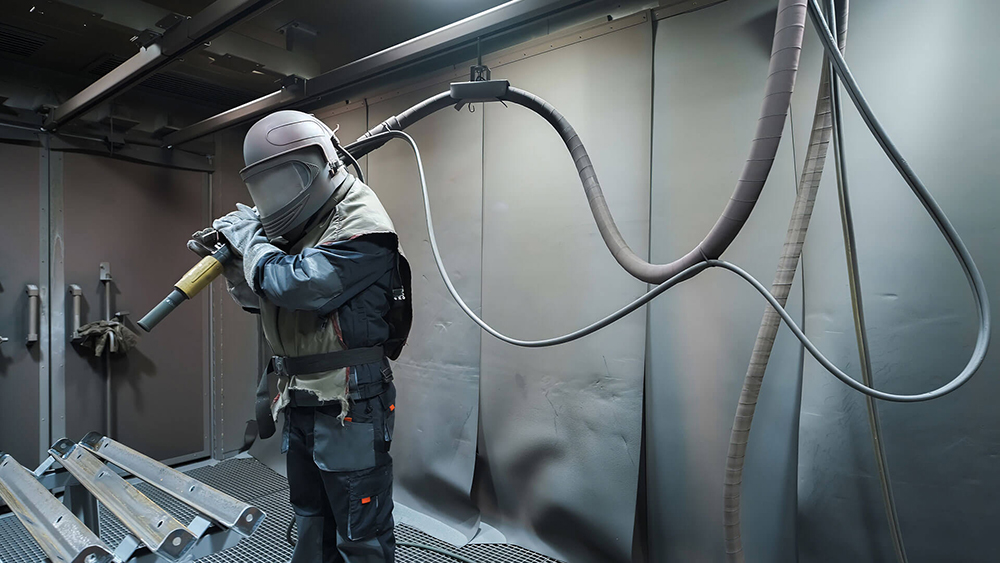

The Critical role of expertise
Both blasting technologies benefit immensely from expert input. Professionals can help tailor the blasting process to specific materials, shapes, and desired outcomes, enhancing efficiency and effectiveness. Expert advice is pivotal in optimizing the operational mix, selecting suitable abrasives, and configuring machinery to maximize productivity and achieve optimal surface qualities.
Conclusion
Understanding the fundamental differences and applications of wheel and air blasting processes empowers industries to choose the most suitable method for their needs. Whether seeking the high throughput of wheel blasting or the precision of air blasting, the forthcoming articles will provide valuable insights and in-depth analysis to guide informed decision-making.



